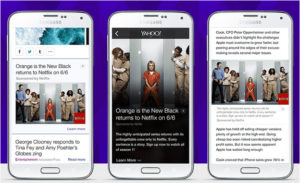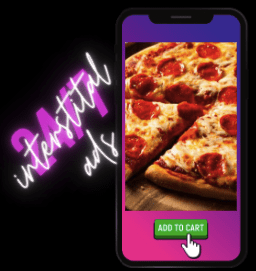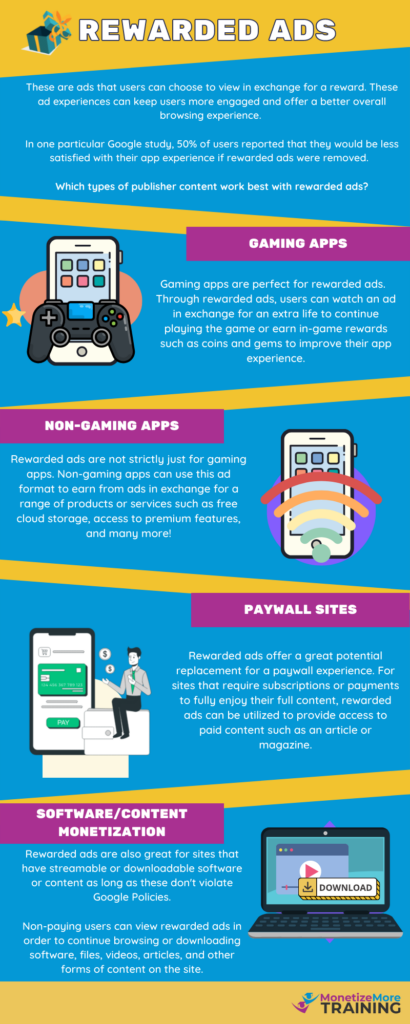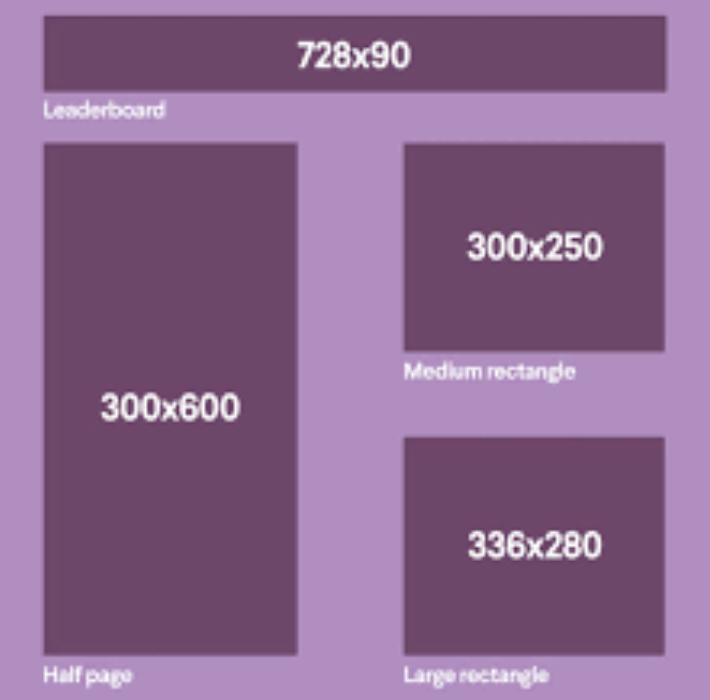Top ad units are constantly evolving, adapting to the ever-changing AdTech landscape and the preferences of online audiences. For publishers seeking to maximize revenue and enhance user experience, staying updated with the latest ad formats and sizes is imperative. In this guide, we’ll delve into the most promising and lucrative ad units and sizes you should be incorporating into your monetization strategy right now.

Best Ad Units List

Interstitial Ads:
These are full-screen ads that cover the interface of their host app or website. They’re typically displayed at natural transition points like between activities or game levels. Interstitials capture the entire attention of users, leading to higher visibility for advertisers. This ensures higher CPMs (Cost Per Thousand Impressions) and CPCs (Cost Per Click). The unavoidable visibility often results in better conversion rates for advertisers, and in turn, they’re willing to pay a premium for these ad spaces.
Rewarded Video Ads:

Common in mobile games, these ads offer users a reward (e.g., in-game currency, premium content, etc.) for watching the entire video. The voluntary nature of rewarded videos usually results in higher engagement and completion rates. Advertisers are willing to pay more for ads that are viewed in their entirety, leading to higher revenues for publishers. Furthermore, by offering tangible rewards, users are more likely to have positive feelings towards the ad content, enhancing brand favorability.
Playable Ads:
These are interactive ads that allow users to try out a game or app before downloading it. They’re highly engaging and can lead to better user acquisition. This leads to higher conversion rates for advertisers.
In recognition of the ad format’s effectiveness in driving quality user acquisitions, advertisers are often willing to allocate a higher budget for playable ads. This results in increased revenue for publishers hosting these ad types.
Carousel Ads:
Carousel ads offer a unique format where multiple images or videos can be displayed within a single ad unit. Each slide can have its own individual link, making it versatile for multi-product showcases or detailed storytelling. The interactive nature of carousel ads encourages users to engage longer, enhancing the chances of conversion. Advertisers often see higher engagement and click-through rates with this format, especially when promoting multiple products or services. As a result, they’re often willing to pay a premium for carousel placements, leading to increased ad revenue for publishers.
Stories Ads:
Stories ads have become a staple in the mobile-first world, primarily popularized by platforms like Instagram and Snapchat. These full-screen vertical ads offer immersive visuals, and users can interact by swiping or tapping through a sequence of images or videos.
The immersive full-screen nature of story ads results in high visibility and engagement. Given that they’re positioned within organic story content, they can achieve high view rates. Their ephemeral nature (often lasting 24 hours) also encourages timely views. Publishers benefit from increased engagement and potential ad revenue, especially when these ads are well-targeted and relevant to the audience.
For all these ad units, the key to maximizing revenue while ensuring user satisfaction is to strike a balance between monetization and user experience. Overloading users with ads or misusing formats can lead to user attrition, which in the long run, can adversely affect revenue streams.
Best Ad Sizes List

Mobile Leaderboard (320×50):
The Mobile Leaderboard is a compact banner format optimized for mobile screens. Measuring 320×50 pixels, it’s typically positioned at either the top or bottom of mobile web pages and apps, providing a discrete yet effective advertising presence.
Large Mobile Banner (320×100):
The Large Mobile Banner, with dimensions of 320×100 pixels, provides a more prominent display space than the standard leaderboard. It offers double the height, making it suitable for detailed graphics or additional ad content, ensuring better visibility on mobile screens.
Medium Rectangle (300×250):
The Medium Rectangle, often termed “Med Rec,” boasts a 300×250 pixel size. Its versatile dimensions make it a favorite among advertisers and publishers alike, suitable for both desktop and mobile placements, often embedded within content or sidebars.
Half Page or Filmstrip (300×600):
The 300×600 Half Page, commonly known as the Filmstrip, stands out with its sizable vertical layout. Ideal for showcasing detailed visuals and ad messages, it effectively captures and retains viewer attention, making it a top choice for brand visibility.
Large Leaderboard (970×90):
The Large Leaderboard, measuring 970×90 pixels, is a premium ad space frequently employed by news and publishing platforms. With its expansive horizontal design, it provides advertisers an unmissable canvas to convey their narratives, driving high engagement rates.
Portrait (300×1050):
The Portrait ad format, with a 300×1050 pixel dimension, offers a commanding presence on web pages. Its elongated design is adept at drawing viewer focus, all while blending seamlessly into content landscapes, ensuring impactful yet non-disruptive ad experiences.
Billboard (970×250):
The Billboard format, with dimensions of 970×250 pixels, dominates the header section of web pages, often just below the navigation bar. This prime positioning guarantees maximum visibility, ensuring the first interaction for users upon site entry. Its ample horizontal space is optimal for delivering impactful messages, showcasing brand creatives, or running video advertisements.
Native Ads:
Native ads, as the name suggests, are designed to mimic the style and aesthetics of the platform or website they appear on. The sizes of these ads can differ widely based on where they’re placed—be it on a news website, social media feed, or a mobile app. The primary objective is to ensure they don’t disrupt the user experience. Rather than standing out as traditional ads, they offer promotional content that seamlessly blends with surrounding organic content.
Vertical Video Ads (9:16 aspect ratio):
Vertical videos, characterized by a 9:16 aspect ratio, have grown in popularity alongside the rise of mobile-centric platforms like TikTok, Snapchat, and Instagram Stories. Tailored for mobile screens, these videos are designed to be viewed in portrait mode, taking up the entire screen and offering a more immersive viewing experience. This format is particularly effective for capturing short, engaging moments or narratives, making it a favorite for influencers, brands, and advertisers aiming to connect with mobile-first audiences.
What Now?
Leveraging the right ad units and sizes is the key to driving optimal results. As we’ve explored, staying updated with the latest trends can significantly impact a publisher’s bottom line. But navigating this landscape doesn’t have to be daunting. With MonetizeMore, the number 1 ad management partner, you’re equipped with expert guidance and cutting-edge solutions tailored to your needs. Don’t just follow the trends; be ahead of them. Get started with MonetizeMore today and unlock your site’s full revenue potential.
source https://www.monetizemore.com/blog/ad-units-sizes-watch/



0 Comments